J.M.J.
+
Hello Friend! Nannie here!
Irish tourism is generally at its peak during the summer months. However, “autumn is also one of the most beautiful times of year to explore Ireland…
Due to its wet, mild climate, Ireland tends to stay green year-round…” (www.mnn.com)
But as you can see by the following pictures, taken in Ireland, the golden honey glow easily establishes itself as companion to the 40 shades of green!
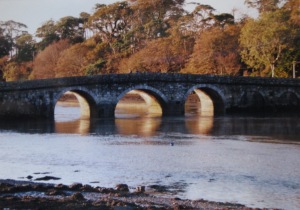
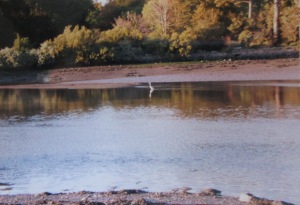
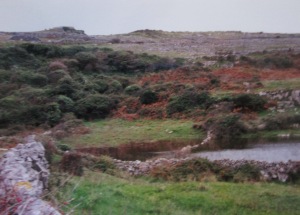
In Ireland “the warm North Atlantic Drift has a marked influence on sea temperatures. This maritime influence is strongest near the Atlantic coasts and decreases with distance inland. The hills and mountains, many of which are near the coasts, provide shelter from strong winds and from the direct oceanic influence.
Winters tend to be cool and windy, while summers…are mostly mild and less windy.” (www.met.ie)
“In spring (February to April), the average highest temperatures range from 46 to 54 degrees Fahrenheit, with April considered particularly pleasant.
In autumn (August to October) (with its bronze-burnished leaves!), highest temperatures hit between 64 and 57 degrees Fahrenheit. September is considered a mild, temperate month. (www.ireland.com)
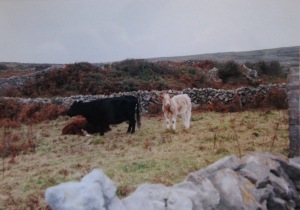
Finney’s little story rhyme included his Friend, Ol’ Mr. Squirrel (Sean Squirrel! ). http://www.conserveireland.com presents the little grey squirrel as having been recently introduced to Ireland. It is believed to have originated in North America with the current population having descended from a large release of squirrels in the midlands in the early 20th century.

The same website goes on to tell us that the little red squirrels seem to have been present in Ireland by prehistoric times before the arrival of the ice age made them extinct in this country. They returned after the retreating glaciers and have also been brought to Ireland and released in large numbers over several periods up until the 19th century.”
As for chipmunks, “the Latin word for the chipmunk family is ‘Tamias’ which means ‘storer’. This reflects their fondness for keeping provisions in their nest like a squirrel, or in the pouches of their chubby cheeks like a hamster.
In Ireland, there is some environmental concern for the little red squirrel in regards to grey squirrels and chipmunks. Seems that the little reds are easily overcome by the presence of the greys and chippies. Having similar eating habits to the little reds, the greys and the chippies pose a threat to the little reds’ survival so much so that the little red are” protected under the Wildlife Act (1976) and Wildlife (Amendment) Acts (2000 and 2010) and the Bern Convention (Appendix III). (www.mammals-in-ireland.ie)
Finally, the bunnies [who “may” have had something to do with the name of Coney Island (located in the southernmost part of Brooklyn, New York) – see Finney’s post #55- Flower Feedin’! – September 29th, 2015] have been a resident in Ireland since the 12th century.
As for the geese and their marvelous V-formation, “Ireland is a key refuge and a hub for Arctic and European migratory birds…Many geese…that inhabit regions in and around the Arctic start to move southwards as the winter sets in. Ireland’s mild winter weather means that wetlands and mudflats never freeze over and provide plenty of water and food for birds. ” Other “winter migrants to Ireland…are passing migrants, and Ireland is an important fueling stop for them on their journey further south.” (www,noticenature.ie/autumn_birds)
God bless you and thank you for visiting Finney and me!


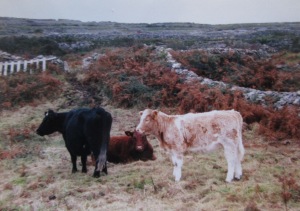

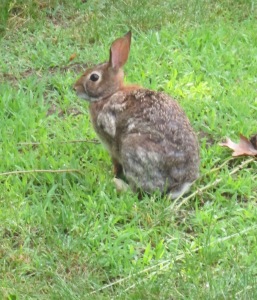
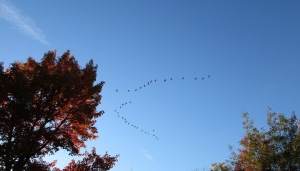
That’s crazy about grey squirrels having been released in Ireland! Also, my memories of Ireland during the fall (September to December) are: cold and wet. Also, our mutual friend Theresa told me today that the birds take turns being the lead bird in the V formation — I’d never known that! Slainte!
LikeLiked by 1 person
Funny to say that the pictures of Ireland were primarily taken during that time when you were there from September to December! The golden-ness is so eye catching!…and I did not know that about the birds taking turns! Another fun fact that has to do with Iceland, is that whooper swans travel from Iceland to Ireland in October! That’s a seven hour trip for them (across 1,000 km. of sea)! Also, over 7,000 geese come from Greenland to Ireland (and the bird is actually called the “Goose of Ireland”) at this time of year! (I got this info at http://www.noticenature.ie) So interesting!
LikeLiked by 4 people
Oh gosh, seven hours! Now that you say the pics were taken then, I do remember that … which reminds me of our trip to Waterford et al. when Nicole was there — I remember that being sunnier too … maybe it was just Galway that was always damp?
LikeLiked by 1 person
Very interesting “fun facts” especially the refuge that Ireland provides the geese on their southern sojourn.
LikeLiked by 1 person
‘Tis so interesting! http://www.noticenature.ie tells us that “Some birds will travel huge distances, often encountering incredible challenges, as they make their way from their breeding areas to their wintering grounds…Ireland’s mild winter weather means that wetlands and mudflats never freeze over and provide plenty of water and food for birds.”
Whooper swans (as just mentioned!) travel from Iceland to Ireland, across 1000km. of sea, to the tune of a 7 hour trip, in October. Also just mentioned is that over 7,000 geese travel from Greenland to Ireland for the winter months. That notice nature website had some fun info!
LikeLike
Replying to sanctanomina…
I looked for some weather patterns for Galway in Ireland…seems to indicate cool and rainy is not unusual, and I was thinking that it is in the western coastal area…receiving the Atlantic effect…?
LikeLike
Wouldn’t it be nice to receive a comment from a reader from Iceland or Greenland.
LikeLike
Oh my goodness, yes!
LikeLike